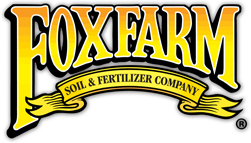January 9, 2024
The time it takes to grow mushrooms can vary depending on the type of mushroom, the cultivation method, and environmental conditions. Here’s a general timeline for the cultivation of common edible mushrooms like oyster mushrooms, shiitake, and white button mushrooms:
- Inoculation to Colonization (Incubation):
- This stage introduces mushroom spores or mycelium (spawn) to the substrate. The mycelium then needs time to colonize the substrate fully.
- Timeframe: This stage typically takes anywhere from 1 to 4 weeks, depending on the mushroom species and the efficiency of the chosen substrate.
- Initiation of Fruiting (Pinhead Formation):
- After the substrate is fully colonized, the mycelium is ready to initiate fruiting. Small pinheads or primordia, which will develop into mushrooms, start to form.
- Timeframe: Pinhead formation usually occurs within 1 to 2 weeks after the substrate has been fully colonized.
- Fruiting (Mushroom Development):
- This is the stage where mushrooms grow and develop. The duration of this stage depends on the mushroom species, environmental conditions, and how well you manage the fruiting chamber.
- Timeframe: Fruiting can take anywhere from 1 to 3 weeks or more, depending on the species.
- Harvesting:
- Once the mushrooms reach the desired size, they are ready for harvest. Harvesting is typically done by twisting or cutting the mushrooms at the base.
- Timeframe: Harvesting can occur over a period of several days or weeks, depending on how quickly the mushrooms mature.
- Post-Harvest Rest:
- After harvesting, giving the mycelium a rest period is advisable before attempting another flush of mushrooms. This allows the mycelium to recover and regain strength.
- Timeframe: The post-harvest rest period is usually around 1 to 2 weeks.
Overall Duration:
The entire process, from inoculation to harvesting the first flush of mushrooms, can take approximately 6 to 12 weeks for many common mushroom varieties. However, keep in mind that subsequent flushes may occur, extending the overall cultivation period. It’s important to note that these timeframes are general estimates, and actual durations may vary based on factors such as temperature, humidity, substrate quality, and the specific requirements of the chosen mushroom species. Regular monitoring and adjustment of growing conditions are essential for a successful mushroom cultivation experience.




